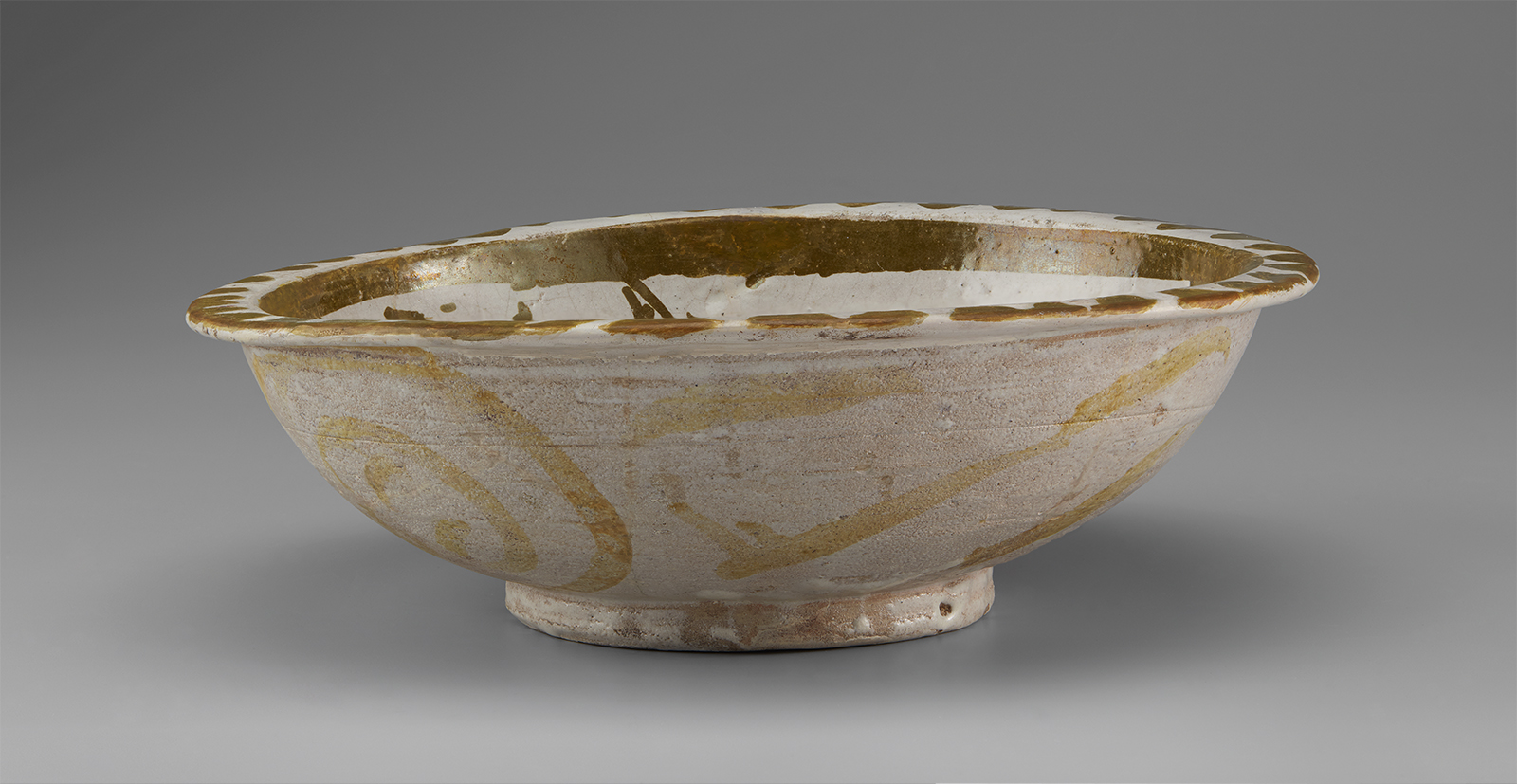Click on the image to zoom
Bowl with a Hare
- Accession Number:AKM684
- Place:Egypt
- Dimensions:20 cm
- Date:11th century
- Materials and Technique:fritware, lustre-painted
By the 10th century, the Fatimid capital of Cairo had become the centre of production for ceramics decorated in a metallic paint with a golden lustrous sheen (known as lustre ceramics). The striking visual compositions on these ceramics portray men and women, acrobats, and animals—such as this jovial long-eared hare—painted in fluid lines and lively naturalism. Their relatively “ordinary” subject matter and the golden tone of the lustre sheen set them apart from the earlier lustre ceramics in Iraq and later examples from Iran. This type of Fatimid lustre-glazed bowl was highly appreciated as an export product throughout the Mediterranean, and several similar bowls can still be seen adorning the exterior walls of churches in Pisa, Italy, from the late 11th and early 12th centuries.
Note: This online resource is reviewed and updated on an ongoing basis. We are committed to improving this information and will revise and update knowledge about this object as it becomes available.








